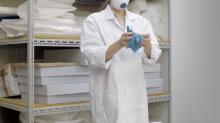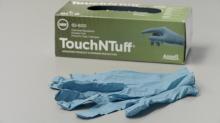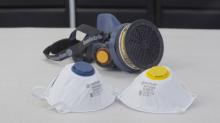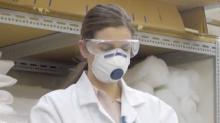Mould
What you will need:




Transcript
Getting started
I am going to talk to you about what to do if you have a mould outbreak in your collection.
Mould is a type of fungal growth. Mould spores are everywhere and are carried through the air, but they do not grow unless the conditions are favourable.
To prosper, mould needs a food source. This could be any organic material in your collection such as paper, leather, wood or textiles.
Mould will only grow if the relative humidity is over 70% for around 2 days. A flood, water leak or an air conditioning malfunction may cause this. It is important to identify and fix the causative problem to prevent further growth.
Dust, heat and poor air circulation also contribute to mould growth.
Health hazard
You need to be aware that some moulds are a serious health hazard. People with health issues or serious allergies should not deal with mould outbreaks.
Before handling any mouldy items you need to put on protective equipment. This includes coveralls or a laboratory coat, disposable gloves, and protective eyewear. A well-fitting facemask is essential. A HEPA mask is preferable, but if these are not available use a P2 mask from a hardware store.
Prevent mould spread
As mould can spread from object to object, try to isolate the affected materials from the rest of your collection.
Next check if your mould is active or dormant. If it is dry and powdery it is dormant. If it is soft and sticky and smears when brushed, it is still active.
Items with active mould are still damp and need to be placed somewhere with good air circulation to dry out before they can be cleaned. Any packaging materials should be removed and carefully disposed of. Do not use fans, as this will spread mould spores. For the same reason avoid placing items near air conditioning intakes.
Buying extra time
If you are overwhelmed with wet or mouldy items, freezing can help to buy extra time. This does not kill the mould but prevents it from getting worse.
If necessary, items with dormant mould can be securely bagged or placed in a sealed plastic tub to isolate them from your collection prior to cleaning.
Removing mould
General mould growth can be removed from most surfaces by brush vacuuming. It should be noted that there can be further damage such as staining or weakening that may require conservation treatment.
When brush vacuuming mouldy items, it is essential to use a vacuum with a HEPA filter to avoid mould spores spreading.
After mould removal
Once you have finished treating mould affected items, bag and dispose of disposable items such as your gloves and masks and the vacuum cleaner’s HEPA filter. Anything that is being kept, such as brushes or clothing, should be thoroughly washed and dried.
Handy hints
Affected shelving or display cases should be dried and cleaned. Vacuum, then wipe or spray with a solution of 70% methylated spirits and 30% water to kill the mould. An unscented aerosol disinfectant spray can also be useful for decontaminating storage and display furniture.
By following these steps you should be able to deal with mould within your collection.
Thanks for listening.












